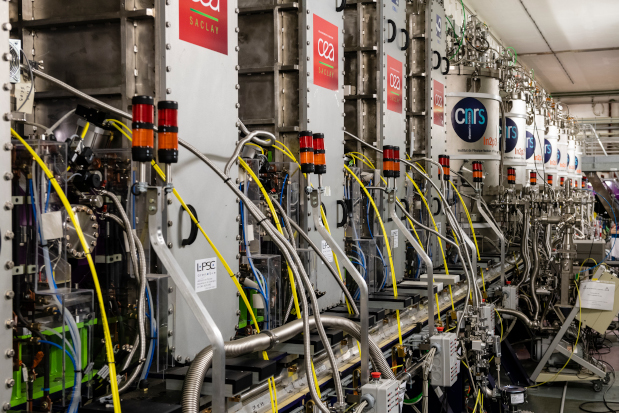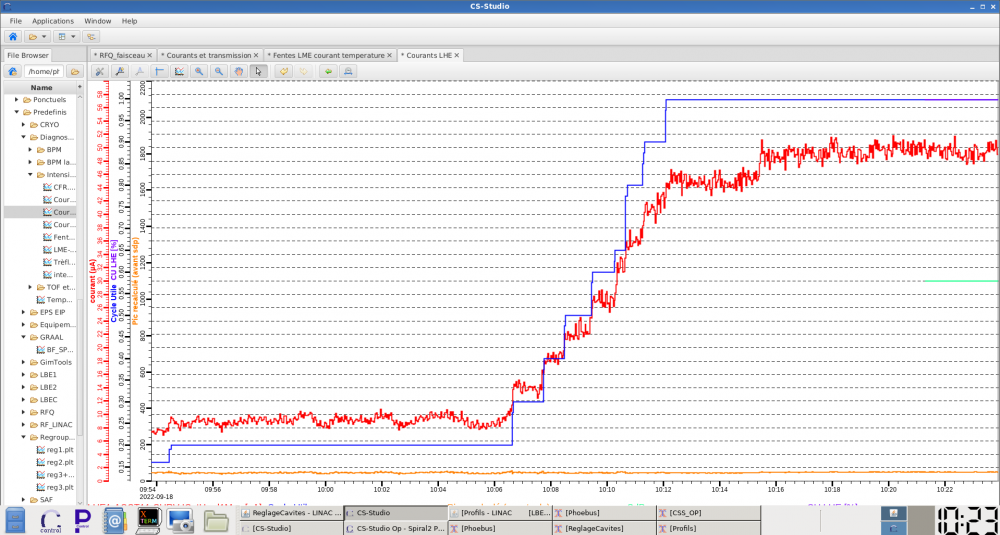
Cryomodules containing the accelerator cavities of the LINear ACcelerator of Spiral 2 (© Philippe STROPPA/CEA/CNRS)
The LINAC SPIRAL2 successfully produced its first oxygen beam on September 16. After protons at the end of 2019 and deuterons in 2021, the GANIL linear accelerator is taking its first steps in accelerating heavy ions produced by the PHOENIX_V3 source. An essential development for the scientific program to come with the S3 spectrometer currently being installed.
The heavy ion beam was composed of 18 oxygen atoms stripped of 6 of their electrons (18O6+ heavy ions). They were accelerated to an energy of 7 MeV per nucleon. The beam reached an overall power of 1 kW, i.e. an ion current of 50 microamps continuously. The transmission of the LINAC observed is of the order of 98% without any particular optimization.
Oxygen-18 is a pilot beam that tunes many ions in the LINAC. It has a maximum mass-to-electronic charge ratio of M/Q =3, requiring equipment to operate at maximum capacity. In addition, the other oxygen electronic charge states could be accelerated in turn with quasi-automatic adjustment, demonstrating the good control and high reliability of the accelerator. A great success for the GANIL-SPIRAL2 teams.

Current measured at the output of the accelerator (in red). The blue curve indicates the percentage of the beam transmitted to the accelerator (ratio between the number of packets of 18O atoms arriving at the exit of the accelerator and the number of packets produced at the ion source). The orange curve shows the current measured at the output of the ion source.



